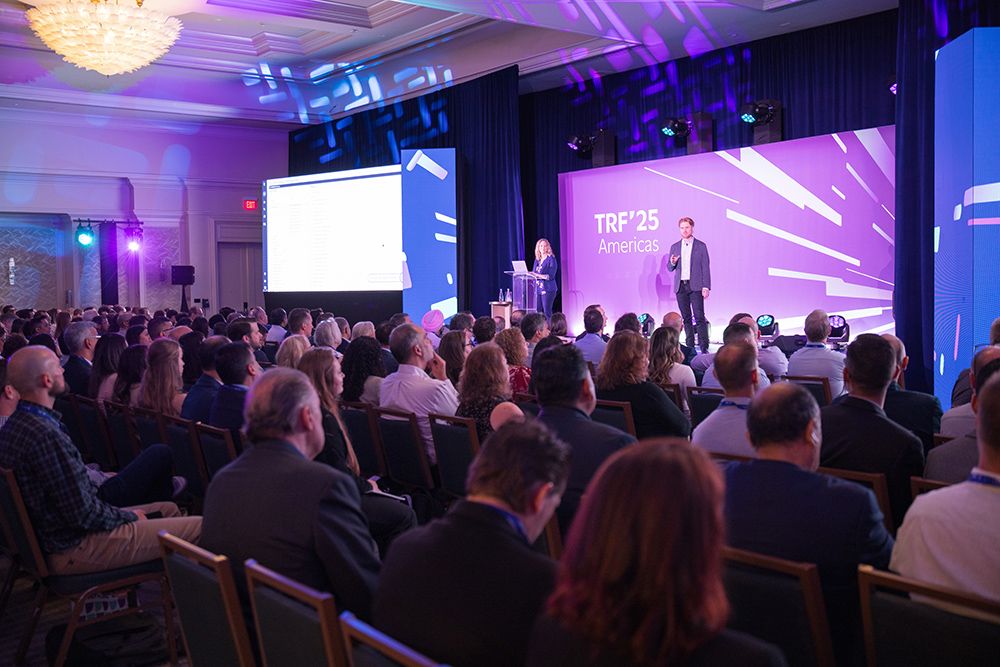Banking’s customer experience upgrade finally has a roadmap
- Banks are finally moving beyond "digital-first" to "experience-first" strategies, with successful institutions reducing business onboarding from weeks to minutes.
- The secret sauce isn't bigger tech budgets but teams who understand customer frustration firsthand, building empathy-driven solutions that create "moments of magic" rather than just digitizing existing processes.

At Turnberry Golf and Resort in Aventura, Florida, one thing was clear: banks are moving from “digital-first” to “experience-first”, and teams who understand customer pain points from the inside make all the difference.
For the better part of a decade, banks have been chasing “digital transformation” as if it were a destination rather than a journey. But conversations last week at the Temenos Regional Forum Americas 2025 spoke to something more nuanced: the most successful institutions have moved beyond simply digitizing existing processes to rethinking customer experiences in an age of one-click buying and generative AI.
The difference isn’t just semantic. It’s the gap between putting a mortgage application online and creating an experience smooth enough that customers complete complex business banking onboarding while “on a mountain bike in Utah,” as one case study demoed during the packed sessions at Turnberry’s convention center.
These transformation stories recognize that solid customer experiences require teams who deeply understand customer frustrations, often because they’ve lived them as customers themselves.
The Experience Imperative: Why digital isn’t enough anymore
The raw numbers from Temenos’ latest banking research tell part of the story. Customer experience topped the priority list for banking leaders globally, followed by launching new offerings and operational efficiency. But from some of the conversations on stage and in the corridors, it becomes clear that “customer experience” means something different now than it did even two years ago.
“Banks are not just standing still. They are modernizing and focusing on where they can make the biggest impact,” noted Isabelle Guis, Temenos’ CMO, presenting research findings to the Aventura audience. The key phrase there is “biggest impact”: institutions are finally getting strategic about where they invest their customer experience efforts, rather than just digitizing everything.
This strategic focus seems to be paying off in measurable ways. Research showed that banks deploying modern digital platforms see 21% more digital active customers. That’s the type of engagement that drives long-term relationship value.
But achieving these results requires teams that understand customer frustration from having experienced it firsthand, whether as former bank employees who sat through painful internal processes or fintech veterans who built solutions to address specific customer pain points.
From weeks to minutes: When customer empathy drives design
One good example that illustrates this experience evolution was offered by a Temenos client bank at the forum.
“We wanted to reduce the time to onboard a customer by half. It took, generally for some of our larger business customers, up to two weeks to onboard that customer. By the time we were done with our MVP, we could onboard a customer, and our record was 12 minutes,” said a Temenos client speaking at the conference.
“A prospect was on a mountain bike in Utah biking, and he finished opening his account at the top of that mountain biking trail,” she added.
The firm seems to understand the customer frustration of endless, repetitive forms to fill out. “If you open multiple accounts and then ask over and over again the same information, and act like you’ve never seen the customer before… it’s annoying. Not only is it annoying, but it can be unsettling to a customer as well,” the client added.
That insight — understanding how data repetition feels from the customer’s perspective — drives their approach. “The customer expects us to know everything about them. We already bank with them. We have all of their information.”
The architecture of experience
Modern banking experiences are only as good as the data architecture underneath, and building that architecture requires understanding both technical possibilities and customer expectations.
“One of the key components was that as much as possible, we did everything with APIs. We didn’t want data being transferred manually in any part of the process,” the client explained during the forum session.
This API-first approach solved a problem that anyone who’s opened a business account will recognize, but it took someone who understood the customer experience to prioritize it.
Real-Time Data: The foundation of customer experience magic
For another Temenos client, EQ Bank, their experience with building a real-time data platform illustrates how fundamental infrastructure becomes to customer experience, and how having teams that understand both sides of the technology equation accelerates success.
Geoff Vona, CTO of the Canadian bank, described the new processes his team built: “Previously, you had to go directly to the production database, which has its own issues, or we had to wait for a day, day and a half for that data to be available from our reporting instance. Now we can get that data safely without affecting our production customers, but we can do that within a minute.”
This technical achievement enables what Vona calls “moments of magic” in customer service interactions. “When somebody is having a problem, we’re going to be able to find out how they had this problem at the same time yesterday… what kinds of problems have they had in the past that might be irritating them?”
Vona captured the emotional impact on customers when you solve their problems: “Those things that you can bring up proactively in a conversation… can be really almost happy moments or moments of relief, where you have that tension, and it just lets the tension out. It’s like, oh, actually, you care about me.”
Conversational Banking: enabling human connection at scale
EQ Bank has no physical branches, but rather than pushing into real estate, the firm is adopting conversational banking where customers can initiate conversations with a bank through channels like SMS, chatbots, and voice assistants like Siri or Alexa with off-ramps to employees available if needed.
At the forum, EQ Bank’s Vona emphasized that the conversational banking push is not your typical chatbot evolution story.
“It’s important to understand this is not an extension of our chat bot,” Vona emphasized during our conversation. “This is intended to be a new channel… What we’re really looking to do is replace that teller and bank manager experience.”
Some customers actually miss these types of interactions from traditional banking: “My bank manager from my branch, back before my EQ days, knew me. And my bank knew what I needed at a certain point in my life, and they would suggest things based on that. It wasn’t just raw marketing of product… there was continuity.”
Technology is enabling human connection at scale.
Putting empathy first in design
Erik Johnson, head of product design at Temenos, discussed the evolution of product design philosophy, offering an interesting insight about this experience transformation: “Everyone should have that design thinking mindset when we approach product development and design… what’s their pain point, and start there by building empathy.”
This represents a philosophical shift that goes beyond interface design and into banking product development from the customer’s perspective rather than the institution’s operational perspective.
Johnson emphasized that this empathy requirement extends to internal users too: “How do bank employees have fun at work? Not just our end consumer and what they’re trying to achieve, but I’m trying to create a new banking product, a new lending product, and how can I have fun doing that?”
The recognition that internal user experience matters just as much as customer experience is driving some of the most innovative thinking in banking technology today.
The continuous evolution challenge
There is a post-launch reality that many institutions underestimate: “As you build a better digital experience, the expectation of the customer is that all of their experiences are on the same level,” the Temenos client added.
This creates what she called the “continuous improvement” challenge: “It’s important that we figure out that as we build these experiences, that they need to be strong, stable, secure and great experiences, so that the customers continue to come back.”
The implication is that customer experience transformation is an ongoing commitment to meeting evolving expectations.
Speed meets understanding
The forum’s customer experience discussions alluded to a shift in competitive dynamics. As Temenos Chief Product Officer, Sai Rangachari, observed, “Banks are under pressure from fintech upstarts… customers feel left behind in terms of what they’re getting out of banking experiences, but they are getting dazzling experiences from fintechs and other startups.”
The digital experience bar is being set by the best digital experiences customers have anywhere, not generally by banks.
Meeting that bar requires what might be called “experience infrastructure” — the underlying systems, data architecture, and organizational capabilities that make good user experiences possible.
Experience as infrastructure
What emerged from the forum is that sustainable customer experience transformation requires deep changes in how banks think about technology, data, and customer relationships. The institutions excelling in this race aren’t necessarily the ones with the biggest technology budgets; they’re the ones that have aligned their operational models around customer needs rather than institutional legacy.
The future belongs to institutions that can deliver on the promise of well-designed, intelligent, and genuinely helpful banking experiences. And achieving that promise requires teams that combine technical excellence with deep empathy for customer needs — often gained through direct experience on both sides of the banking relationship.
Everything else is just technology.


